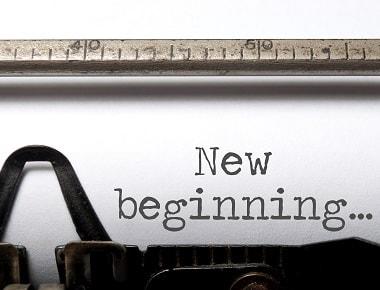Yes, alcohol is a drug and is classified as a depressant. It is one of the most widely used legalized drugs that is regulated by the Department of the Treasury’s Alcohol and Tobacco Tax and Trade Bureau.
Frequently Asked
Questions
We accept Anthem, Blue Cross, Aetna, United, Health Net, Cigna, and all PPO plans. Unfortunately, we cannot currently accept Medicaid or Medicare.
Call now for EligibilityWe assist clients throughout the recovery process, starting with detox, continuing with 90-day residential care, and culminating in long-term outpatient care.
From Detox to Sober LivingYellowstone Recovery offers comprehensive drug and alcohol treatment in Southern California. Contact admissions to learn more about the recovery process
Call for an Interview TodayGateway drugs are considered those drugs that are easily accessible by young people and which can be a precursor to trying other drugs later in life. This concept is often referred to as the “Gateway Drug Theory”.
Marijuana may or may not be a gateway drug—the evidence is inconclusive. Some research indicates that people who use marijuana are more likely to abuse other substances. Other studies suggest marijuana could affect the brain in a way that primes young people for later drug use. That being said, most marijuana users do not graduate to more dangerous drugs.
Combining both Xanax and alcohol further amplifies the health risks and dependency upon the drugs. Since the effects are intensified, the likelihood of an accidental overdose is greater. Furthermore, the effects experienced and dangerous consequences of consuming both together become even more pronounced.
Spice is one street name for synthetic cannabinoids, a new set of designer drugs. Intended to mimic the composition of marijuana, these man-made chemicals are nonetheless far more powerful, far more unpredictable, and far more dangerous. In some cases, they can be deadly. Typically, they’re sprayed on plant material or sold as liquids.
Heroin is a highly addictive opiate derived from the resin of the poppy plant. Although illegal, it is used recreationally by people who prize its euphoric and painkilling effects. Roughly 25 percent of those who use heroin will become physically dependent on the drug.
Heroin comes in the form of powder, black tar, crystals, or granules. Its appearance depends on its purity, its place of origin, and the process by which it is refined. Powdered heroin can range in color from white to brown. Dealers typically package the drug in aluminum foil or balloons.
The symptoms of alcoholism include:
- morning tremors
- an inability to quit drinking
- a loss of control over drinking habits
- withdrawal symptoms
- relationship troubles
- health problems
- falling behind in daily tasks
- guilt
Other warning signs include missed work or school, risky behavior (e.g. drunk driving), blackouts, legal problems, personal injury, and worried friends and family.
Alcohol influences the regions of the brain that govern judgment, movement, speech, and memory. Short-term effects include slurred speech, impulsive or erratic behavior, memory lapses, and trouble walking. Heavy drinking over an extended period of time can even shrink the frontal lobes and permanently impair cognitive ability.
Inpatient rehab involves treating someone full-time at a care facility. It can last between 28 to 90 days and almost always includes detox as well as counseling. Outpatient rehab programs are part-time; they allow people to live at home and carry out their normal routine. They rely heavily on individual and group therapy sessions.
Some of the most dangerous drugs on the planet include:
- heroin
- cocaine
- barbiturates
- street methadone
- alcohol
- crystal meth
- ketamine
- amphetamines
- tobacco
- bath salts
Drugs are typically ranked by how much physical harm they can cause to someone who uses them, how addictive they are, and their overall impact on society.
Withdrawal symptoms vary depending on:
- what substance a person has abused
- how long they have abused it
- how frequently and how much they used
- what methods they used (e.g. snorting, injecting)
- how healthy they are
Physical withdrawal symptoms can include sweating, racing heart, nausea, vomiting, diarrhea, palpitations, tremor, etc. Emotional withdrawal symptoms can include anything from anxiety and depression to insomnia and headaches.
Benzos are another name for benzodiazepines, or tranquilizers. Doctors prescribe tranquilizers to help patients overcome anxiety, muscle tension or insomnia. They can also be used as anti-seizure medications. Benzos are some of the most commonly abused prescription drugs in the United States.
Alcoholism is caused by a combination of factors, including genetics, environment (e.g. friends or family who drink), and mental health conditions. While experts still aren’t sure which factors contribute the most to alcohol dependency, they do know that alcoholism develops when long-term use changes the brain in a way that boosts the pleasure of drinking, thereby increasing the desire for alcohol.
Alcohol abuse, also known as alcoholism, is a chronic disease. Characterized by an inability to control one’s drinking, it occurs when someone becomes habituated to heavy alcohol use. Like any drug abuse problem, alcoholism can be debilitating. At the very least, it can destroy a person’s health, relationships, and employment prospects.
When someone has a blackout, they forget key events after a bout of drinking. Blackouts occur because alcohol interferes with the part of the brain that controls memory formation. There are two types of blackouts: “en bloc,” which happens when someone permanently forgets large chunks of time, and “fragmentary,” when people temporarily forget brief moments.
No. Drug and alcohol detox can be dangerous. In some cases, it can be deadly. Someone who is trying to wean themselves off alcohol or drugs can experience hallucinations, nausea, delirium tremens, convulsions, insomnia, and even heart seizure. As a result, detox should always be carried out at a licensed facility where trained medical staff can supervise the withdrawal process.
Residential treatment centers, also called rehab centers, are healthcare facilities that patients live in while undergoing treatment for substance abuse. Inpatient rehab programs, designed for people who need intensive and comprehensive treatment, typically offer medically supervised detox, individual and group counseling, holistic care such as horse-riding or yoga, physical activities, and nutritional education.
Outpatient treatment helps people overcome substance abuse problems without living full-time at a facility. They give individuals the freedom to carry out their normal routine outside of treatment hours. Patients can work, go to school, and take care of family, all while recovering from alcohol or drug abuse.
A blackout period describes an interval during inpatient rehab treatment when the individual is not allowed to contact anyone outside the facility. The point is to create a safe, stress-free and distraction-free environment for withdrawal. During the blackout period, a recovering addict can take time out to learn or relearn ways to cope with the pressures of the outside world.
The costs of drug and alcohol rehab vary significantly between programs. Some subsidized recovery programs are free or covered entirely by insurance providers. Other treatment centers cost thousands of dollars per day. Inpatient centers can cost anywhere between $6,000 and $60,000, depending on the facility and the length of stay. Outpatient programs typically cost between $5,000 and $10,000.
Polysubstance, or polydrug, use refers to situations when someone uses a variety of drugs or regularly combines two or more substances together.
Although they are both strong opioid painkillers, the difference between oxycodone and hydrocodone exist in their short and long-term effects.
The length of alcohol detox depends on a number of different factors including physical health, metabolism, and how long you’ve been struggling with addiction.
Yes, if you are ready to come into treatment today Yellowstone will work with you and your loved on to make the transition into treatment as smooth and timely as possible.
Yes, Yellowstone has both male and female residents. Programming is done both together and separately on the group level. We understand that the disease of addiction effects both men and women separately and we offer our clients the safety and privacy of recovering within their gender group.
We have a variety of different ages ranging from 18-60. The most common demographic is 23-40.
Yellowstone has homes located throughout Costa Mesa and Newport Beach all located within 2 miles of local beaches.
Yes, we believe in healing the mind, body and spirit and support this through exercise. All houses have individual weight stations and our program offers yoga, jazzercise and creative dance.
We accept most PPO insurance plans and private pay clients are also accepted. Payment arrangements can be made based on family’s specific needs.
All necessities are included in our program fees. All food, lodging and transportation capabilities are provided within each house. Meals are cooked family style, and individual client specifics can be added to a weekly grocery list. Basic toiletries are provided but specific “favorite” items will need to be provided by the family.
Request More Information
Start your recovery today.
- Treatment Options
- Program Curriculum
- Program Services
Why Choose Yellowstone?
Low Cost Pricing
Financing Available
PPO Insurance Accepted
Provide Complete
Continuum of Care








